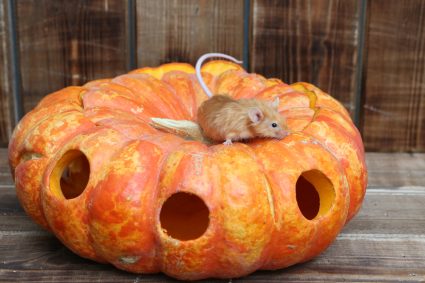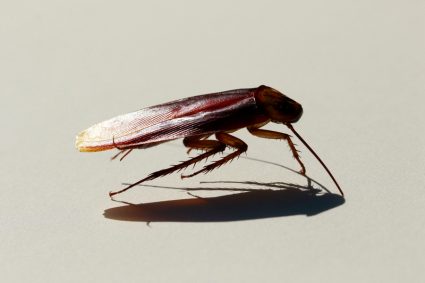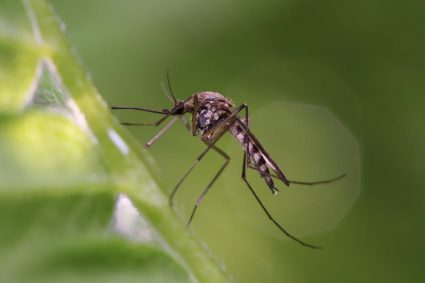
Most snake species are nocturnal. This means that they are primarily active at nighttime or late evening. It is, therefore, not unusual to find them moving around or coming out of their shelter at night.
However, not all snake species are active at night. There is also a specie of snake called the night snake, with light brown or beige skin and big brown spots on its body. These are harmless to humans and can be found in hot, dry areas.
Snakes are hunters, and this influences their movements. By nature, they cannot withstand extreme heat, so they stay hidden during the day and set out after the sun goes down.
- Snakes typically have an excellent nighttime vision and can navigate through the darkness and find food or hiding places.
- In some instances, snakes go out to find areas with cool shades. It could be under a rock, leaves, shrubs, or corners piled with debris.
- Snakes that go out at night sometimes do so in search of food. Their search may bring them into your yard if you have livestock or keep poultry.
Since they move at night, you will not likely see them slink into your yard. For safety, keep your windows and doors closed so they don’t enter your house.
In the subsequent headings, this article covers six reasons snakes come out at night and five likely places you may find them at such times. We have also included an FAQ section to shed more light on the topic.
6 Reasons Why Snakes Come Out at Night

Snakes go out at night because they are naturally inclined to do so.
Especially since most of them have good vision in poorly lit environments, it would be a waste to sleep off the entire night.
1. Weather Changes

Snakes hide out in cool places from the hot summer sun. Fall and spring are relatively cool weathers that do not pose a threat of extreme heat or coldness to them.
In cold weather, snakes go into brumation, which preserves them from the harshness of low temperatures. When it’s fall or spring, the weather is neither too hard nor too hot, so they can enjoy being outdoors during the day.
However, as summer temperatures rise, snakes look for cool spots to cool off, such as underneath plants, debris, or rocks. The weather becomes considerably cool at night, so they crawl to begin their otherwise ‘daily’ activities.
So, changes in temperature or the weather, in general, could encourage or discourage snakes from coming out at night.
2. Hunting Strategy
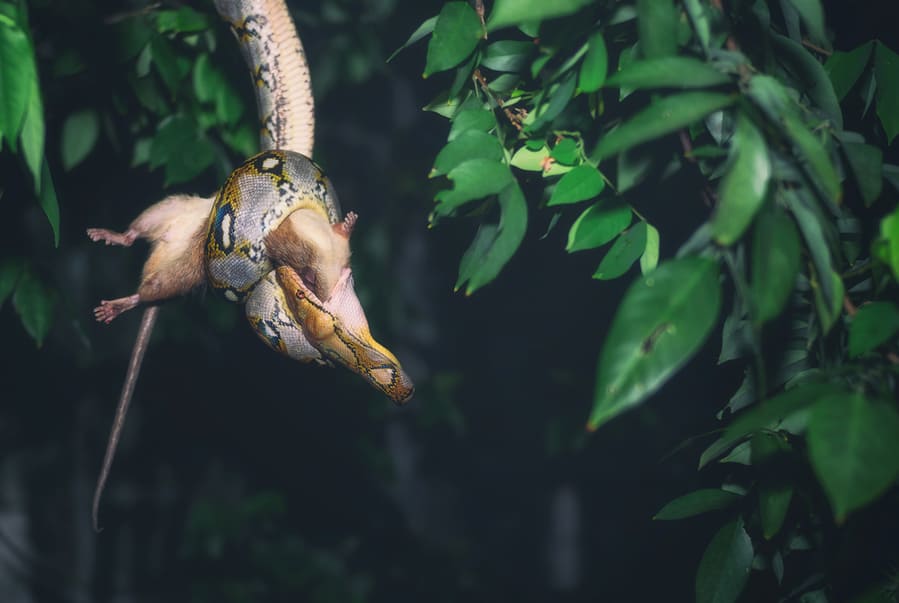
Snakes do not have big bodies to intimidate prey, hands, hinds, or claws to trap them. What they have on their side is stealth and venom, in the case of venomous snakes.
This means they must creep up on unsuspecting rodents, fish, small reptiles, or insects and lunge for them before they escape.
What better time to creep up on prey than when it’s dark?
Of course, it helps significantly that snakes can see at night, and most of their prey cannot.
Snakes also go into holes and burrows of other animals to hunt them.
3. Thermoregulation
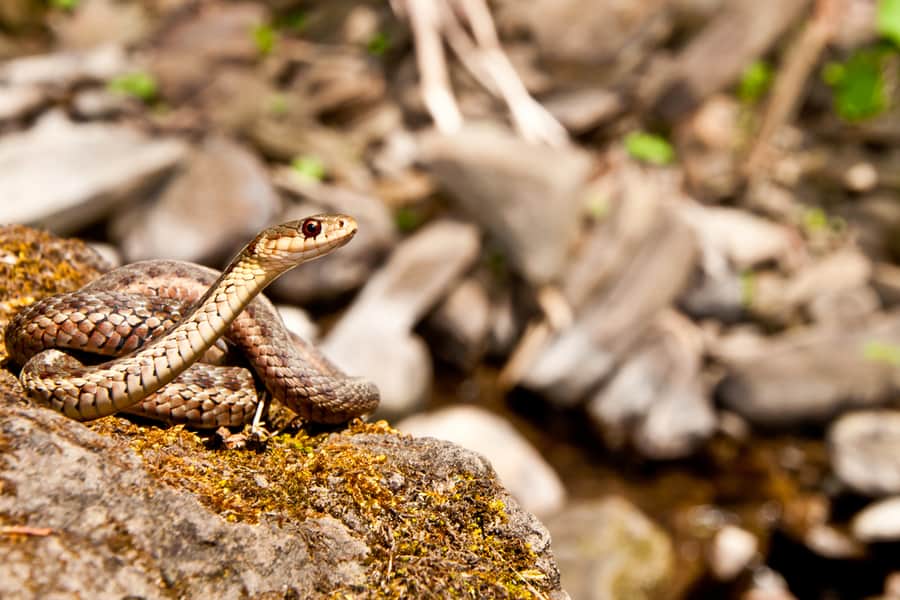
Snakes are cold-blooded creatures who regulate their body temperature by switching locations.
When too cold, they move to warm enclosures and vice versa.
If a snake needs cooling off after a hot sunny day, it will come out at night searching for cool spots to lie in.
This helps them to thermoregulate and keep their bodies healthy.
4. Self-Preservation
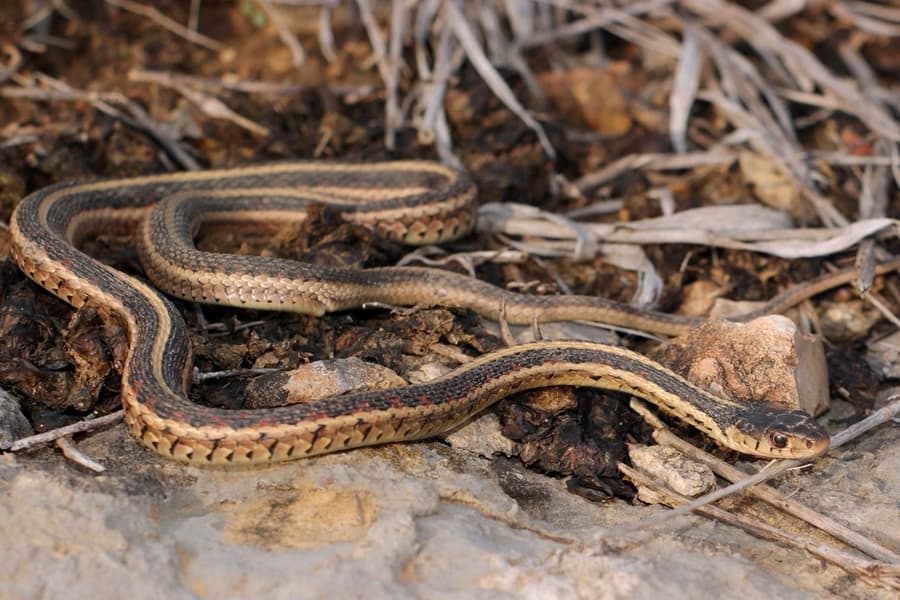
Snakes also move at night to avoid predators who hunt during the day.
Although small snakes may fall victim to other giant snakes during a night outing, going out at night saves them from other daylight hunters.
For instance, mongoose and hawks are snake predators who only hunt during the day.
So, snakes that move at night can avoid getting eaten by these.
5. Search for Hiding Places

Snakes also go out in search of new homes or nests.
For those who saved most of the nighttime activity, it is an ideal period to choose a new hole to live in or a new rock to wedge under.
While some snakes dig holes for themselves, most snakes take over holes and burrow from other animals. Typically it would be the nest of rodents they have just hunted, usually happening at night.
6. Water

Not only do snakes need water to survive, but they also feed on animals that live in water. Animals like frogs and fish are part of a snake’s diet, found in or around watering holes.
For snakes who choose to spend daylight hours sleeping, coming out at night allows them to go in search of water to drink. This also extends to rainfall.
When rain falls, snakes risk having their hiding place or holes flooded. So, they must search for new homes or hide in dry spots nearby.
Then, the search for a new home begins the following night. As a result of their cold-blooded nature, snakes need warmth from other sources to survive and cannot live close to cold waters.
So as a necessity, they must move when they need water to places where they can find water to drink. Doing so during the day will expose them to excess heat, which is unsafe.
5 Places Snakes Go When They Come Out at Night

Snakes that go out at night rarely do so randomly.
Depending on what they are out for, the destination ranges from hiding spots to watering holes and building corners.
1. Slithering in Search of Food
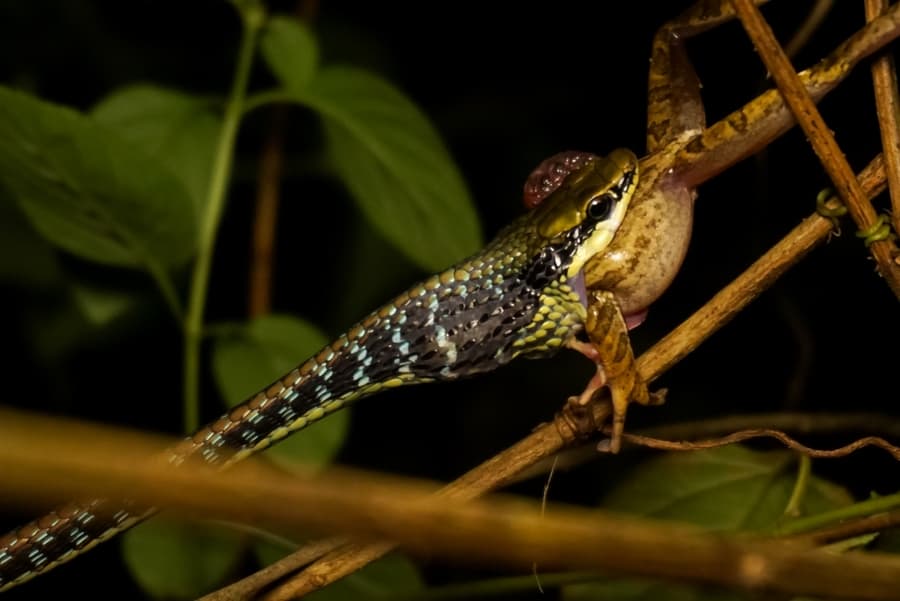
One of the primary reasons why snakes go out at night is for food.
Snakes may trail rodents to their holes or caves or go hunting for frogs and fish in water, depending on where it is moving from.
They also eat insects and small reptiles that hide under rocks, leaves, grasses, or debris.
Chances are that a snake will find a snack or two in its new home.
2. Hiding Under Tall Grasses and Shrubs

Snakes also go to hide in tall glasses and shrubs. Not only do these provide excellent camouflage for snakes whose colors match the vegetation, but they also provide shades that shield them from direct sunlight.
So, a snake may move from one corner to another where it’s more comfortable and safe.
It could also make such areas into hunting grounds depending on prey availability.
3. Hiding Under Leaves and Rocks

Snakes also like to hide under rocks. They also hide in hollowed trees or underneath piles of fallen leaves.
They often utilize caves and cracks in rocks as homes. It’s pretty common to find multiple snakes living in such cool spaces.
Rocks get warmed up by sunlight, so the spaces between them have the right temperature.
4. Burrows and Holes
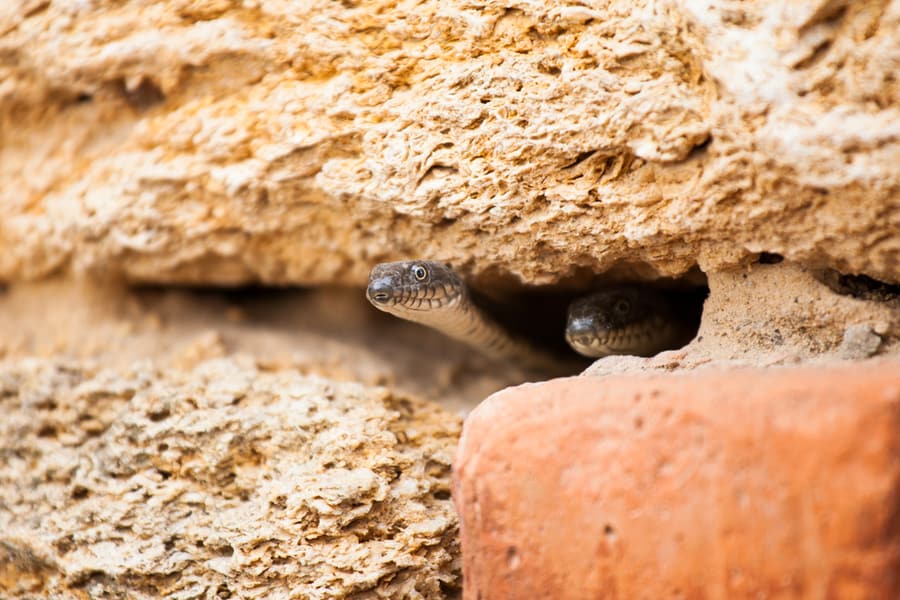
Snakes also maintain a sense of security when out in the open. So, they often find holes and caves to hide in.
These can double as shelters and nests to lay eggs.
Also, snakes are not opposed to feeding on whichever creature originally made the burrow if they can overpower and kill it.
5. Comfortable Spots in Your Yard
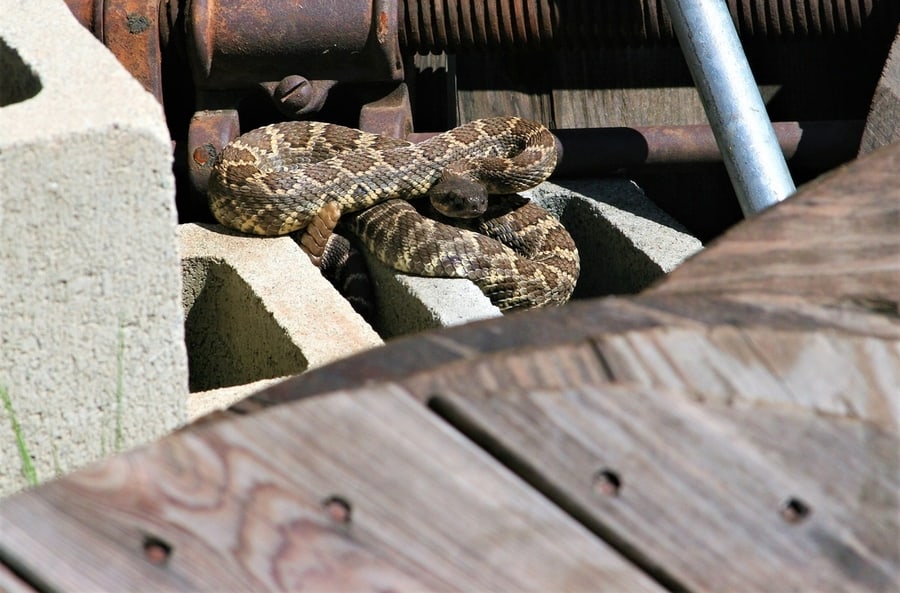
While moving through its territory and close areas, snakes may wander into your yard.
They could be attracted by rodents running into your yard or garden, especially if you have a greenhouse.
They also like to lay undisturbed in seemly abandoned places.
So, if it finds a warm spot near your home, it will return after its nightly travels.
Conclusion
Snakes act according to their nature, and a large number of them are naturally nocturnal. So, their lifestyle fits this behavior.
They can hunt, move around to check out their territory, or find a new home, whether daytime or nighttime. But most snakes prefer to drive at night.
Frequently Asked Questions
What Time of the Night Are Snakes Most Active?
Snakes are most active in the late evenings and early in the morning. To a large extent, however, this depends on temperature or weather changes.
Snakes will choose the cooler part of the day to move around, hunt and find new spots. And stay in hiding or sound asleep in the hotter part of the day.
The goal is to stay hydrated and relaxed, determining when they move around or stay indoors.
Do Snakes Bite at Night?
Yes, they do. Snake bites occur at night and can happen during the day too.
A snake is as active as any other animal during the day. It doesn’t save some actions for the day and others for the night.
Typically, snakes avoid human beings and go about their business. But they will attack to defend themselves if they feel threatened.
So, it’s unlikely that one will crawl into your home and aim for your legs or arms. However, you may unknowingly startle one hiding in some corner of your home.
In response, such snakes may lunge at you and bite. However, most snake bites in homes in the US are by non-venomous snakes, which aren’t fatal.

